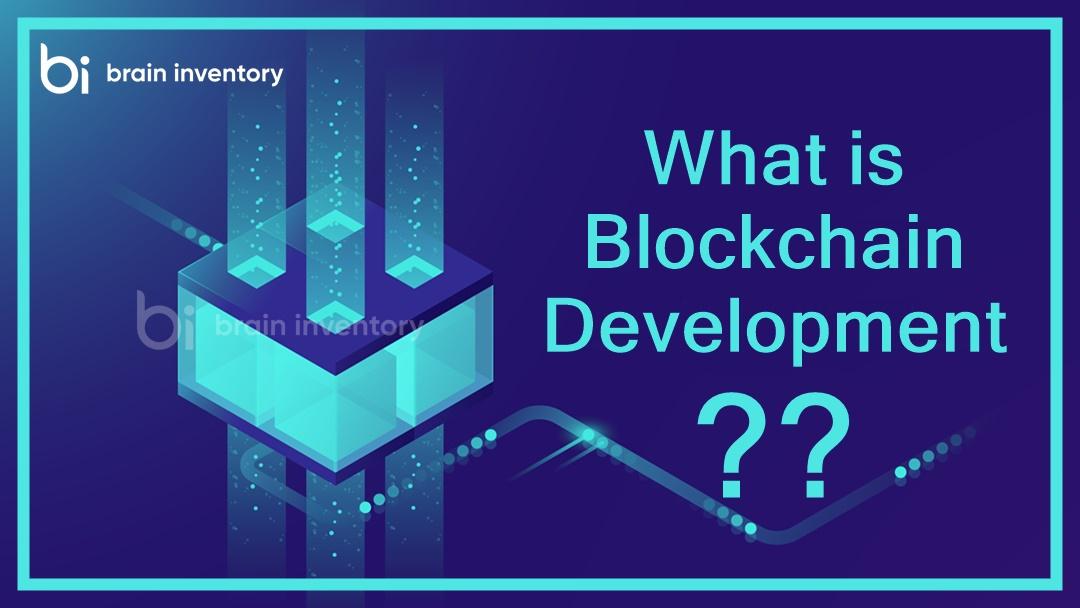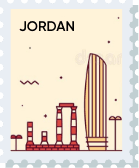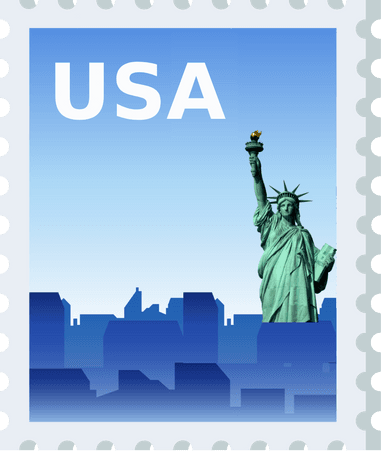What is Blockchain Development?

Blockchain technology is a new-generation database system that allows seamless information sharing within a network. It has gained tremendous popularity in recent years because of its built-in mechanisms that prevent unauthorized access to data. In this technology, the database stores data in the form of blocks, and these blocks are connected together in a chain. The data remains consistent because you cannot delete or modify this chain without getting permission from the network owner. As a benefit, you can employ blockchain development technology to create an unbreakable ledger for tracking accounts, payments, or other transactions.
To fully leverage the potential of this technology, it’s crucial to hire web developers who have expertise in building secure and scalable blockchain networks.
Why Is Blockchain Important?
Traditional database technologies had a few challenges in terms of security. The financial transactions were always on the verge of data breaches. For example, in the supply chain management system, imagine there is a manufacturer shipping goods to a retailer. Now once the goods are dispatched, the manufacturer may record the shipment and financial details in the database, while on the other side, the retailer records the receipt of goods. In this scenario, neither of these records comes trustworthy.

The manufacturer could say they have already shipped the goods even if they haven’t. Retailers might also present similar allegations. They might appoint a third-party logistics manager to validate the transfer of goods. And if this third-party manager alters the data, it could lead to disputes between the manufacturer and retailer. Furthermore, it damages the relationship between both the parties involved.
Blockchain eliminates such issues by creating a leak-proof database system to record financial transactions. In the supply chain example, if we use blockchain technology, it creates only one ledger for both parties. All transactions and entries must be approved by both the manufacturer and retailer and are updated in real time. Any possibility of corruption will disrupt the entire record. The security benefits of blockchain technology have led to its popularity in various sectors today.
Modern businesses can hire custom app developers to fully utilize this technology.
Features of Blockchain Technology
Decentralization– Decentralization refers to transferring access power and decision-making from a centralized entity to a distributed network. Decentralized blockchain databases use the concept of transparency to avoid trust issues among the involved parties. This type of decentralized network also holds participants from giving control to one another, which ultimately poses a threat to the security of the system.
Immutability– It means that once you have recorded something in the database, it can not be changed or altered. No participant can modify a transaction once it is recorded in the shared ledger. If a transaction is recorded by mistake, you have to add another transaction to reverse the error, so that both the transactions are visible to the network.
Approval- A blockchain system doesn’t allow participants to record new transactions until everyone gives their consent. You can only add new ones when the majority of participants in the network approve.
Key Elements of Blockchain Development Technology
A typical blockchain architecture has these components in common:
- A distributed ledger– A ledger acts as the shared database that can store all the transactions. This works like a shared file that every participant can access. In some of the networks, anyone with editing access can delete the entire file. However, in a blockchain network, there are strict rules on who can edit and who has access. Entries can’t be deleted once they have been recorded.
- Smart contracts– Companies who don’t want an assisting hand, use smart contracts to self-manage business contracts. These are programs stored in the blockchain network that run automatically when predefined conditions are met. These programs work on the in-then logic so that transactions are safe. For example, a transportation and logistics company can use a smart contract to automatically make payment once goods reach their destination.
- Public key cryptography– It is a security component that uniquely identifies participants in a blockchain network. There are two sets of keys for all the members. One is a public key which is common for everyone in the network and the other is a private key which is unique to every member. The database can be accessed using both the keys together.
How Does Blockchain Work?
Step 1- Record the transaction
A blockchain transaction involves the movement of physical or digital assets from one member to another in the network. Data is recorded in the form of blocks and contain details like these:
- Who was involved in the transaction?
- When did the transaction take place?
- What happened during the transaction?
- Where did the transaction occur?
- Why did it occur?
- What was the price of the asset that someone exchanged?
Step 2- Gain Approval
The majority of members in the network should agree that the recorded transaction is accurate. Depending on the type of network, rules may vary but are typically set at the start of the blockchain network.
Step 3- Linking the blocks
After the approval of all the participants in the network, transactions can be recorded into the blocks just like we write them on the pages of a ledger book. Along with the transactions, a cryptographic element called hash is also attached to the blocks which acts as a chain that links the blocks together. If the data in any block changes, or is unintentionally modified, the hash value changes, providing a way to detect data threats.
Thus, linking the blocks by using chains provides a way to secure the data, as you can’t edit them. Each new block added to the network strengthens the verification of the previous block and thus the entire blockchain. Imagine you are stacking wood blocks one above the other to make a tower. Now you can only stack blocks on the top, if you remove a block from the middle or anywhere, the tower breaks!
Step 4- Sharing the Ledger
The system distributes the recently edited copy of the centralized ledger to all the members.
Types of Blockchain Network

There are nearly four types of networks in the blockchain-
- Public Networks– Public blockchain networks allow everyone and anyone to join them. You don’t need permission to access the data in this type of network. All members hold equal rights to read, edit, or validate the blockchain. People use public blockchain networks to exchange and hold cryptocurrencies like Bitcoin.
- Private Networks– A single organization controls private networks where the authority is in power of the owner and he decides who can be a member and who gets the access to edit the data.
- Hybrid Networks– Hybrid blockchain networks combine the components of both private and public blockchains. Companies can set up private networks alongside a public network. This is the best way to hold control over specific data stored in the blockchain while keeping the rest of it public. For example, hybrid blockchains give public access to digital currency while keeping the bank-owned currency private.
- Consortium Networks– This type of blockchain network is especially for a group of organizations. Organizations are selected in advance, and they share the responsibility of managing the blockchain and deciding data access rights. Industries with many small organizations, who share a common goal, often prefer consortium networks.
What is Block Chain Development?
Blockchain development includes developing and managing a blockchain network. This means creating the infrastructure for holding blockchain-based apps and components like smart contracts, digital currencies, and distributed applications. It also involves developing the necessary tools and technologies to support the platform.
Blockchain development is a time-consuming and complex process, so the professional needs to have a deeper understanding of the technology and its benefits like security and scalability. Developing a blockchain platform requires a great deal of expertise and resources.
Technical Skills Required to Become a Blockchain Developer
You must possess these technical skills if you want to become a blockchain developer-
-
-
- Knowledge of data structures like arrays and lists
- Knowledge of cryptography
- Understanding of networking concepts like TCP/IP and how they work
- Excellent programming skills in popular languages like Java or Python
- Good experience with web application development frameworks like Django
- Experience with custom blockchain development
-
The Bottom Line
Blockchain is becoming increasingly popular because of Bitcoin and cryptocurrency, as people explore its many advantages and practical applications. It is like a buzzword for every investor present across the world, blockchain stands as a big name to make business and government operations more secure, accurate, and efficient.
As a leading Blockchain development company, we understand the scope and potential of this revolutionary technology. We can see the future and thus we offer our services in this domain. Collaborating with an experienced company like ours will help your business stay relevant and secure your data like a pro!
Contact us to discuss more.

Have an idea?
Get in touch, we’d be
happy to hear from you
We are always looking out for new collaborations, whether you are a client who is passionate about a project or a talent who is interested in joining our team, our doors are always open.
locate us

India (HQ)
618, Shekhar Central, Palasia Square, A.B Road, Indore, Madhya Pradesh, 452001
+918109561401

United Kingdom
Brain Inventory, SBVS, 8 Roundhay Road, Leeds, UK, LS7 1AB
+18008209286

Canada
44 Main Street East Milton, ONCanada L9T 1N3
+4166696505

Jordan
185 Wasfi Al-Tal Street, Ammon Oasis Complex P.O Box 4724 Amman 11953 Jordan
+960770781000

USA
720 Seneca St Ste 107 Seattle, USA 98101
+1(206)6533419
if it's digital,we'll make it.
- Numetric - Online Accounting Software similar to QuickBooks
- Bloomia - Kegel exercise
- Virifi - Blockchain Powered Document Certification & Signing Platform
- Revolution Travel CRM - Custom CRM Built for Travel Agents
- Fatoura - Online Invoicing Platform
- My Fit Mantra - Your health partner
- Ocureel - Relation Building and video sharing Application